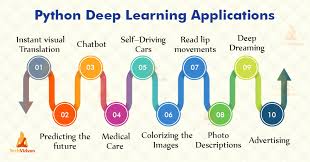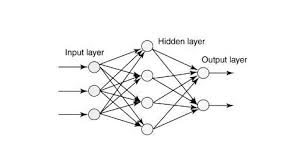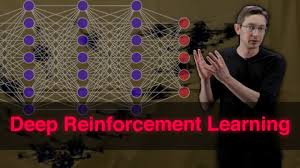Exploring Deep Neural Networks with Python
Deep neural networks have revolutionized the field of artificial intelligence and machine learning, enabling computers to learn complex patterns and make decisions in a way that mimics the human brain. In this article, we will delve into the world of deep neural networks and how you can implement them using Python.
What are Deep Neural Networks?
Deep neural networks are a type of artificial neural network with multiple layers between the input and output layers. These layers, also known as hidden layers, enable the network to learn intricate patterns and relationships in data, making them ideal for tasks such as image recognition, natural language processing, and speech recognition.
Implementing Deep Neural Networks with Python
Python is a popular programming language for building deep neural networks due to its simplicity, readability, and extensive libraries such as TensorFlow, Keras, and PyTorch. These libraries provide high-level abstractions for creating neural networks, making it easier for developers to experiment and build sophisticated models.
To get started with deep neural networks in Python, you can follow these steps:
- Install Python on your computer if you haven’t already.
- Install a deep learning library such as TensorFlow or PyTorch using pip or conda.
- Choose a dataset for your project – this could be anything from images to text data.
- Preprocess your data by normalizing it or converting it into a format suitable for training.
- Create a deep neural network model using the chosen library – define the architecture, specify activation functions, and compile the model.
- Train your model on the dataset by feeding it with input data and adjusting the weights through backpropagation.
- Evaluate the performance of your model using metrics such as accuracy or loss.
- Deploy your trained model for real-world applications or further experimentation.
Conclusion
In conclusion, deep neural networks are powerful tools for solving complex problems in various domains. By leveraging Python and its rich ecosystem of libraries, you can easily build and train deep neural network models to tackle challenging tasks in machine learning and AI. So why not dive into the world of deep learning today?
Advantages of Using Python for Deep Neural Networks: Readability, Ecosystem, Efficiency, Flexibility, Community Support, and Scalability
- Python offers a simple and readable syntax, making it easy to prototype and implement deep neural networks.
- Python has a rich ecosystem of libraries such as TensorFlow, Keras, and PyTorch that provide high-level abstractions for building complex neural network models.
- Deep neural networks implemented in Python can handle large datasets efficiently, enabling training on vast amounts of data for better model performance.
- Python’s flexibility allows for seamless integration with other data processing and visualization tools, enhancing the overall workflow in deep learning projects.
- Python’s community support is extensive, with active forums, tutorials, and resources available to help developers troubleshoot issues and stay updated on the latest advancements in deep learning.
- Python’s scalability makes it suitable for both small-scale experiments and large-scale production deployments of deep neural network models.
7 Challenges of Using Deep Neural Networks in Python
- Steep learning curve for beginners due to complex concepts and algorithms involved.
- Training deep neural networks can be computationally intensive and time-consuming, especially with large datasets.
- Requires a significant amount of labeled data for training, which may not always be readily available.
- Overfitting is a common issue with deep neural networks, leading to poor generalization on unseen data.
- Hyperparameter tuning can be challenging and often requires trial-and-error experimentation.
- Interpreting and debugging deep neural network models can be difficult due to their black-box nature.
- Deployment of deep neural network models in production environments may require specialized hardware or cloud resources.
Python offers a simple and readable syntax, making it easy to prototype and implement deep neural networks.
Python’s simple and readable syntax is a significant advantage when it comes to prototyping and implementing deep neural networks. This feature allows developers to quickly experiment with different network architectures, activation functions, and hyperparameters without getting bogged down in complex syntax or boilerplate code. The ease of use of Python makes it an ideal choice for building and testing deep neural network models efficiently, enabling researchers and practitioners to focus more on the innovative aspects of their projects rather than on coding intricacies.
Python has a rich ecosystem of libraries such as TensorFlow, Keras, and PyTorch that provide high-level abstractions for building complex neural network models.
Python’s strength in the realm of deep neural networks lies in its extensive ecosystem of libraries, including big names like TensorFlow, Keras, and PyTorch. These libraries offer developers high-level abstractions that simplify the process of constructing intricate neural network models. By leveraging these powerful tools, programmers can focus more on the design and functionality of their models, rather than getting bogged down in low-level implementation details. This streamlined approach not only accelerates development but also empowers users to create sophisticated neural networks with ease and efficiency.
Deep neural networks implemented in Python can handle large datasets efficiently, enabling training on vast amounts of data for better model performance.
Deep neural networks implemented in Python offer the advantage of efficiently handling large datasets, allowing for training on extensive amounts of data. This capability not only enhances the performance of the models but also enables them to learn intricate patterns and relationships within the data, leading to more accurate and robust predictions. By leveraging Python’s flexibility and powerful libraries for deep learning, developers can harness the potential of deep neural networks to tackle complex tasks and achieve superior results in various domains.
Python’s flexibility allows for seamless integration with other data processing and visualization tools, enhancing the overall workflow in deep learning projects.
Python’s flexibility shines when it comes to deep neural networks, as it enables seamless integration with other data processing and visualization tools. This versatility enhances the overall workflow in deep learning projects, allowing developers to easily incorporate various data sources, preprocess information efficiently, and visualize results effectively. By leveraging Python’s compatibility with a wide range of tools and libraries, such as NumPy, Pandas, and Matplotlib, practitioners can streamline their processes and create more robust and insightful deep learning models.
Python’s community support is extensive, with active forums, tutorials, and resources available to help developers troubleshoot issues and stay updated on the latest advancements in deep learning.
Python’s community support is extensive, providing developers with a wealth of resources to enhance their deep learning endeavors. Active forums such as Stack Overflow, Reddit, and specialized communities like TensorFlow and PyTorch forums offer platforms for troubleshooting issues and sharing knowledge. Additionally, a plethora of tutorials, online courses, and comprehensive documentation are readily available to guide both beginners and seasoned professionals through the intricacies of deep neural networks. This robust support network ensures that developers can stay updated on the latest advancements in deep learning, fostering continuous learning and innovation within the field.
Python’s scalability makes it suitable for both small-scale experiments and large-scale production deployments of deep neural network models.
Python’s scalability is a significant advantage when it comes to utilizing deep neural networks. Its versatility allows for seamless transitions between small-scale experiments and large-scale production deployments of deep neural network models. Whether researchers are fine-tuning algorithms in a controlled environment or organizations are implementing sophisticated models in real-world applications, Python’s adaptability ensures that the development process remains efficient and effective at any scale.
Steep learning curve for beginners due to complex concepts and algorithms involved.
For beginners, one significant drawback of delving into deep neural networks with Python is the steep learning curve imposed by the intricate concepts and algorithms involved. The complexity of understanding how neural networks function, along with grasping the underlying mathematical principles and optimization techniques, can be overwhelming for those new to the field. This barrier may deter beginners from fully engaging with deep learning projects and hinder their progress in mastering this advanced technology.
Training deep neural networks can be computationally intensive and time-consuming, especially with large datasets.
Training deep neural networks can be a daunting task due to its computationally intensive nature, particularly when dealing with large datasets. The process of optimizing the network’s parameters through backpropagation requires significant computational power and time. This can lead to challenges in terms of hardware requirements, training duration, and overall efficiency, making it a notable drawback of using deep neural networks in Python.
Requires a significant amount of labeled data for training, which may not always be readily available.
One notable drawback of utilizing deep neural networks in Python is the substantial requirement for labeled data during the training process. This can pose a challenge as obtaining a sufficient amount of accurately labeled data may not always be feasible or readily accessible. The scarcity or inadequacy of labeled data can hinder the effectiveness and performance of deep neural network models, leading to potential inaccuracies and limitations in their predictive capabilities. Researchers and developers often face the dilemma of balancing the need for extensive labeled data with the practical constraints of data availability, highlighting a critical consideration when working with deep neural networks in Python.
Overfitting is a common issue with deep neural networks, leading to poor generalization on unseen data.
Overfitting is a prevalent drawback associated with deep neural networks implemented in Python. This phenomenon occurs when the model performs exceptionally well on the training data but struggles to generalize effectively to new, unseen data. Overfitting can lead to reduced accuracy and reliability in real-world applications, as the model becomes too specialized in capturing noise and outliers present in the training dataset. It is crucial for developers working with deep neural networks to employ techniques such as regularization, dropout, and early stopping to mitigate the risks of overfitting and ensure better generalization performance on unseen data.
Hyperparameter tuning can be challenging and often requires trial-and-error experimentation.
Hyperparameter tuning in deep neural networks using Python can be a challenging aspect of model development, often necessitating trial-and-error experimentation. Identifying the optimal combination of hyperparameters, such as learning rate, batch size, and network architecture, can be a time-consuming process that requires thorough testing and evaluation. This iterative approach to fine-tuning hyperparameters can lead to increased computational costs and longer development cycles, making it a significant drawback in the implementation of deep neural networks.
Interpreting and debugging deep neural network models can be difficult due to their black-box nature.
Interpreting and debugging deep neural network models can be particularly challenging due to their black-box nature. Unlike traditional machine learning models, where the decision-making process can often be traced and understood, deep neural networks operate with numerous hidden layers and complex weight adjustments. This complexity makes it difficult to pinpoint why a model made a specific prediction or to identify potential errors in the model’s logic. As a result, developers may find it hard to improve model performance or ensure its reliability, which can be a significant drawback when deploying these models in critical applications where transparency and accountability are paramount.
Deployment of deep neural network models in production environments may require specialized hardware or cloud resources.
The deployment of deep neural network models in production environments using Python may present a significant challenge due to the requirement for specialized hardware or cloud resources. Running complex neural networks efficiently often demands high computational power and memory capacity, which may not be readily available on standard devices. This can lead to additional costs and complexities in setting up and maintaining the necessary infrastructure to support the deployment of deep learning models, making it a potential drawback for organizations looking to implement these advanced technologies at scale.




